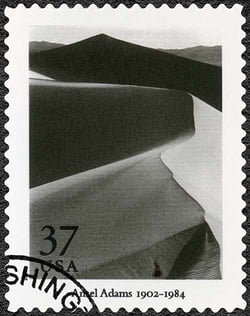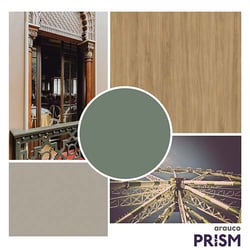- Home
- >> Blog
Design With Intention, Part 2: Designer-Led Discovery

 Part 2 of 4 in a special series that contemplates how purpose and creativity merge when you “design with intention.”
Part 2 of 4 in a special series that contemplates how purpose and creativity merge when you “design with intention.”
“It’s about choosing to be thoughtful about your design.”
Jonathan Speh, award-winning product designer and user experience developer, gives us this deceptively simple but key comment. This is the essence of designing with intention.
A virtuoso in the darkroom, Adams would adapt the chemistry used in developing his negatives and prints to achieve the contrast, tonality and balance of the image he’d burned into his brain when he first uncapped his lens. Practicing what he called “previsualization” – having a concrete sense of how the final black-and-white image should look even before he pulled his camera from its case – he debunked the idea of art by accident with purposeful images that shimmer and sing like nothing the world had seen before. In the world of furniture, architecture and interior design, the creator’s first goal is to fully understand the client’s vision for the project. Think of every space as an immersive user experience, where successful design inspires or enhances specific feelings and behaviors – resting, celebrating, healing, meditating, shopping, learning, relaxing, being inspired.
In the world of furniture, architecture and interior design, the creator’s first goal is to fully understand the client’s vision for the project. Think of every space as an immersive user experience, where successful design inspires or enhances specific feelings and behaviors – resting, celebrating, healing, meditating, shopping, learning, relaxing, being inspired.
The expert designer leads the discovery process with the client, often a conversation in several parts before design begins. The designer shares images, material palettes, or mood boards. The client shares budgets, timelines and demographics. This minimizes material boundaries and gets to the heart of the client’s vision for the project, in a context where nothing is yet impossible. Who will be using the space? How often? How should they feel? What will they share about their experience?  These are the factors that will set the intention for a designer’s “performance” of the project. Materials, textures, color, lighting, acoustics, scent, and temperature are all the instruments and notes you need to bring the plan – the score – to life, in alignment with the intended nature of the project.
These are the factors that will set the intention for a designer’s “performance” of the project. Materials, textures, color, lighting, acoustics, scent, and temperature are all the instruments and notes you need to bring the plan – the score – to life, in alignment with the intended nature of the project.
“An object is defined by its nature. In order to design it to function properly, one must first of all study its nature. For it to serve its purpose perfectly, it must fulfil its function in a practical way.”
– Walter Gropius, founder of the Bauhaus movement
Are the practical boundaries of commercial design limiting? Or liberating? This depends in part on each individual but setting parameters can also be a catalyst for creativity in the same way that artists often develop systems to channel their intuitions. Be on the lookout for our next installment, “Design Abhors a Vacuum, or the Beauty of Constraints,” where we’ll explore the liberating influence of limitations.
Be on the lookout for our next installment, “Design Abhors a Vacuum, or the Beauty of Constraints,” where we’ll explore the liberating influence of limitations.
As you lead the discovery process with your clients and develop successful projects, we hope you remember our fun refresher about designing with intention. We invite you to learn more about how ARAUCO Prism® TFL can help. Visit www.prismTFL.com to search designs, download software assets, use the Room Studio visualizer, and request samples. Samples are always free to qualified A&D professionals. To keep your professional credentials current, we also offer credit-approved CEUs.
###